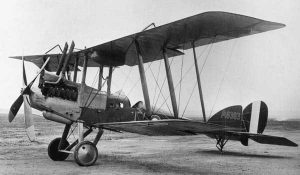Not all the RFC units in the field were fortunate in receiving the very best of the third generation of fighters. For some months, the BE12, a single-seat ‘Jack of all Trades’ version of the stable, viceless BE2c, had been at the Front with two squadrons making scant impression on the air war. Initially intended to serve as a fighter, it was tried in several roles: none of which suited it – especially that of bombing. As one weary ex-No.19 Squadron pilot would recall, the BE12’s performance was so poor that:
…‘when bombing Courtrai one could observe the German fighters leaving their aerodrome and be more (than) sure that they would have gained superior height by the time the objective was reached’… .
Following grave losses, Trenchard demanded swift action, calling for the BE12a to be rapidly withdrawn from the Front line. This took time to implement, however, and the BE12 units struggled on for several more months before being re-equipped with more modern aircraft. Late versions of the BE12 with slightly more powerful engines fared little better, but the BE12b with its Hispano-Suiza motor did make a reasonably effective night-fighter for home defence use against German Zeppelins and Gotha bombers in late 1917.

